Profile in Preservation
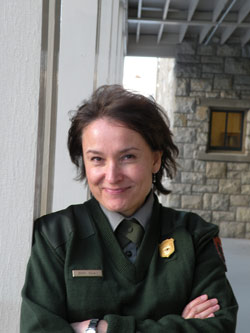
Quick Facts
Position: Landscape Architect
Specializatons: Historic Preservation Planning
NPS Start Date: 1983
Landscape Architect Position Start Date: 2001
Associated Landscapes:
Meet Zehra Osman
Zehra Osman remembers first learning about cultural landscapes in 1990. “I was the new park landscape architect at Grand Canyon and was anxious to begin improving public spaces on the South Rim. I was told I’d have to slow down my projects to document something called cultural landscapes.”
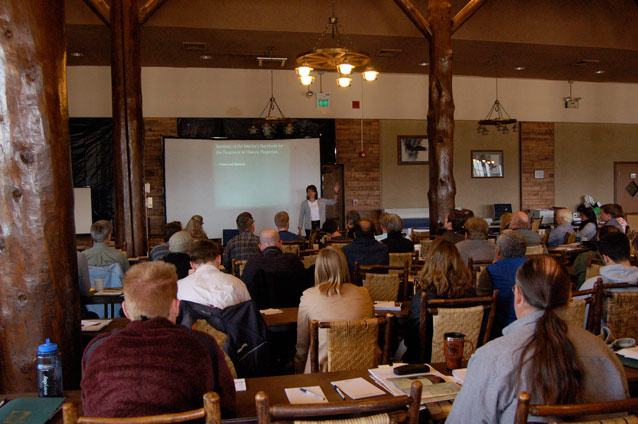
Once she explored the idea of cultural landscapes and historic preservation concepts, she was hooked. “When I discovered how a cultural landscape contributed to the character of a historic property, I knew our projects would be even better – that we could preserve the sense of place.”
What began as a new interest led her to utilize cultural landscape research for most projects while at Grand Canyon National Park (1989-1994), Delaware Water Gap National Recreation Area (1994-2001), and now at Yellowstone National Park. She also worked for the Denver Service Center between 1984 and 1989.
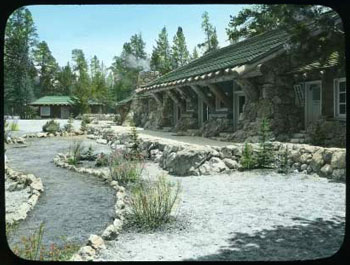
NPS/Yellowstone National Park archives, YELL 15927
These days, Zehra works as a planner in Yellowstone’s Comprehensive Planning and Design office and is also part of a core team that coordinates the park’s cultural landscape program. She is the primary point of contact for contracted cultural landscape documents, which highlight opportunities to enhance historic preservation in planning projects such as the Tower-Roosevelt Area and Lake Area Comprehensive Plans. She also examines the effects of various other projects that are proposed within cultural landscapes throughout the park.
Questions for Zehra
1. What is your favorite cultural landscape within Yellowstone?
Rustic style landscapes such as at the Fishing Bridge Museum, where the built environment blends seamlessly into the natural landscape are my favorite.
2. What is your favorite cultural landscape outside of Yellowstone?
Central Park. I love historic urban parks and public spaces where people have been able to experience nature, find solitude, or be around other people. I love that people can access these landscapes without having to go very far from home.
3. What do you like best about working with cultural landscapes?
I learn something new about preserving a sense of place with every project, and while working with every CLI contractor and every preservation specialist. Recently, I have been learning a great deal from the Olmsted Center for Landscape Preservation, who is developing the park’s first Cultural Landscape Report for Mammoth Hot Springs. A few years ago, I was very impressed with the stonemasons from the Historic Preservation Training Center when they helped us on a preservation project at Apollinaris Springs with our park trail crew.
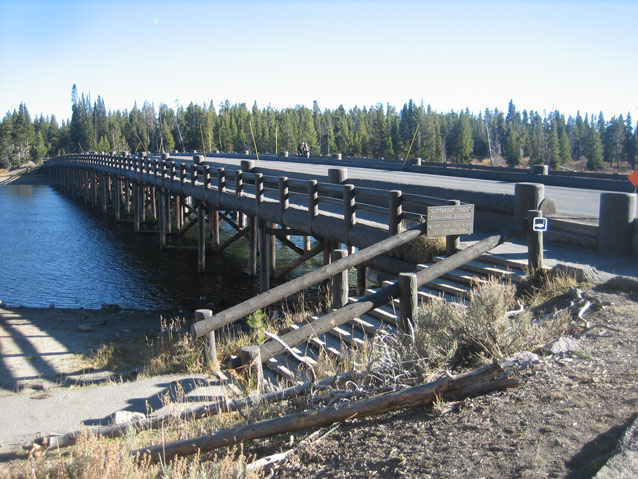
NPS/Yellowstone National Park
4. What do you like best about being a landscape architect?
Landscape architects provide (or preserve!) the platform that brings people to the threshold of nature, whether it’s a path in a garden, a promenade along an urban park, or an overlook viewing the Grand Canyon.
I like to think landscape architects help choreograph these remarkable encounters. We also strive to improve visitor wayfinding, so visitors don't have difficulties navigating through an unfamiliar landscape. That way visitors have the opportunity for full enjoyment and inspiration of the park and its landscapes.
5. Who else is involved with cultural landscape preservation/documentation at Yellowstone?
I am lucky to work with an great core team that includes the chief of Comprehensive Planning and Design, Eleanor Clark, and Tobin Roop, Branch Chief for Cultural Resources. We also work with excellent CLI contractors, such as Liz Sargent. Our park historian, Lee Whittlesey, has researched and written histories for us and provided valuable reviews of our documents, as have other cultural resource specialists.
We are very grateful for Carrie Mardorf and Jill Cowley [formerly] at the regional office, who are always ready to roll up their sleeves with us on most every project and provide great expertise on both documentation and determination of effects.
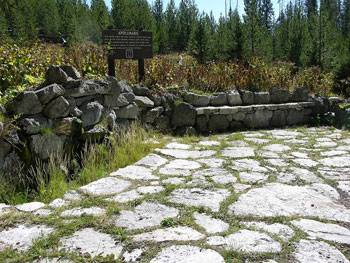
NPS/Yellowstone National Park
6. How does Yellowstone ensure that cultural landscapes are preserved and/or protected?
Our best line of defense is teamwork, which starts early with project proponents, SHPOs, and other specialists. Early communication that occurs frequently throughout the project is essential.
7. What are some every day challenges that cultural landscapes face at Yellowstone? How do you work to try to mitigate those?
We do our best to stay ahead of projects by documenting the landscapes first. Our biggest challenge is getting everyone on the same page in terms of what a cultural landscape is, what is important about it and why; also terminology, and intangible values. It’s our job to clarify, educate, and bridge the gaps.
Tags
Last updated: June 17, 2020
